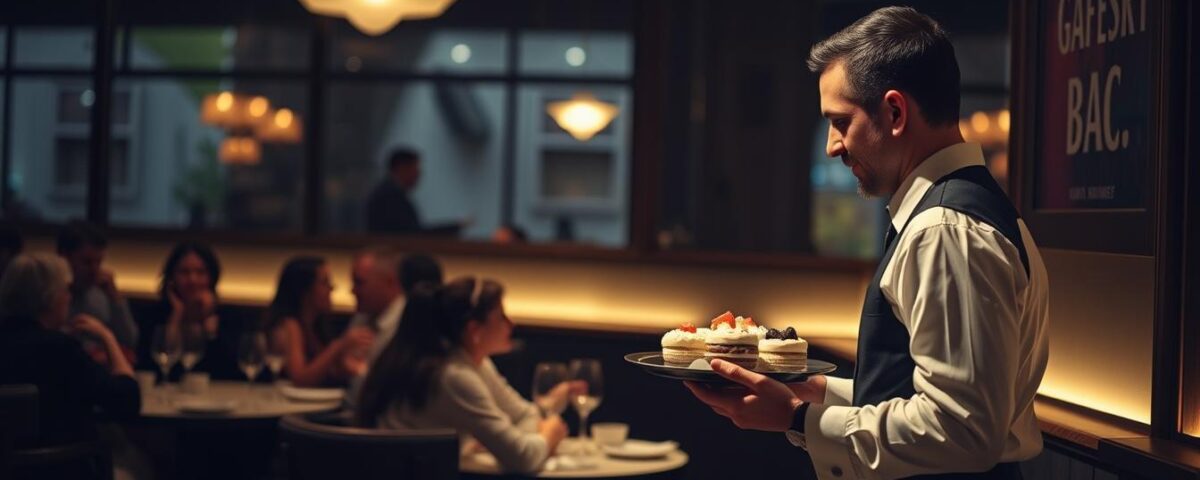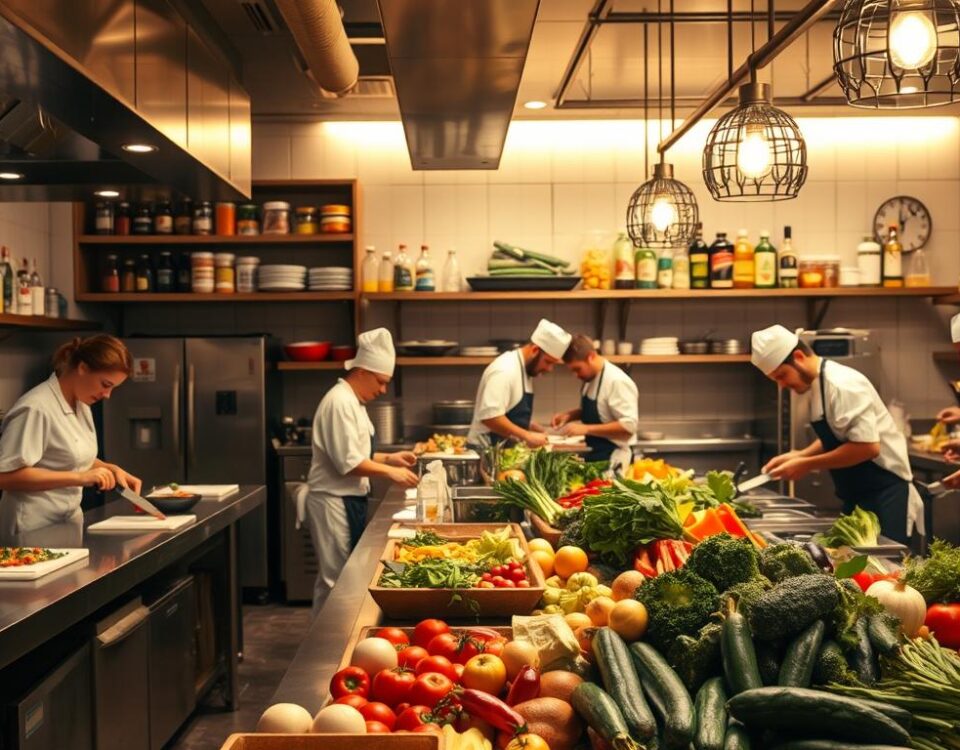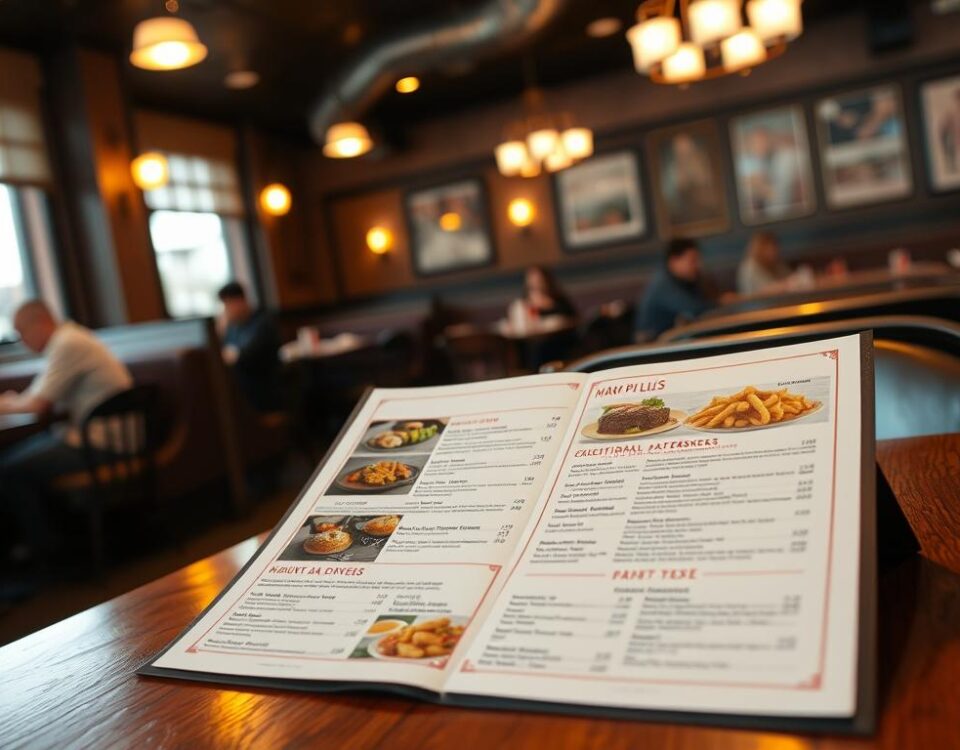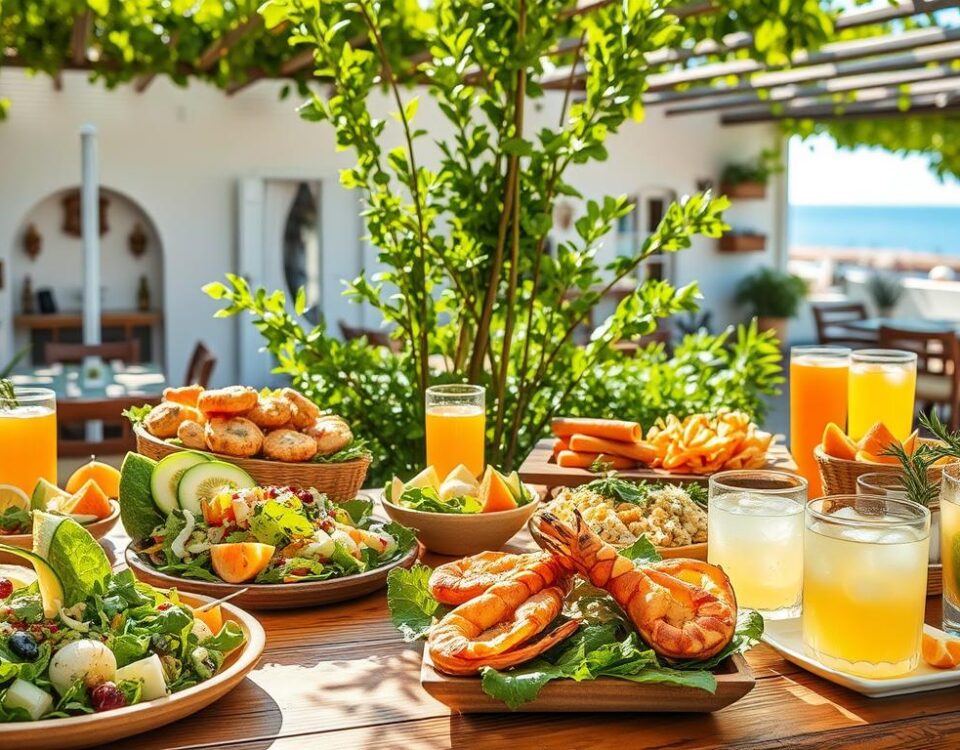
How the Busiest Restaurants Keep Tables Full Every Night with Smart Strategies
July 4, 2025
6 Layout Hacks Top Restaurants Use to Maximize Profits
July 5, 2025Imagine walking into a restaurant and being subtly influenced to spend more than you initially planned. This isn’t magic; it’s the power of psychological triggers at play. Studies have shown that certain psychological cues can significantly increase customer spending without them even realizing it.
Every aspect of a dining experience is influenced by customer psychology, from the initial ambiance to the presentation of the meal. Understanding these psychological principles is crucial in the competitive restaurant industry. By creating an experience that resonates on a psychological level, restaurants can increase revenue ethically.
As we explore the world of psychological triggers, you’ll discover how small, strategic changes can make a significant impact on a restaurant’s bottom line. What if you could boost your average check size just by tweaking a few elements of your dining experience?
Key Takeaways
- Understanding psychological triggers can help increase customer spending.
- Small changes in the dining experience can significantly impact revenue.
- Psychological principles can be applied across all types of restaurants.
- Ethical considerations are crucial when using psychological triggers.
- Menu design and sensory marketing are key areas where psychological triggers can be applied.
The Psychology Behind Restaurant Customer Spending
The psychology of customer spending in restaurants is a complex interplay of emotions and experiences. Restaurants that understand this psychology can tailor their services to create a more engaging and profitable experience for their customers.
Understanding customer behavior is key to anticipating their needs and creating emotional connections that resonate with diners. This connection is crucial for building a loyal customer base.
Influencing Dining Decisions
Customer psychology significantly influences dining decisions, from the initial visit to becoming a loyal patron. The journey involves several key decision points, including the first impression, the quality of service, and the overall dining experience. Positive experiences create neural pathways that make customers more likely to return and spend more on subsequent visits.
The “peak-end rule” is a crucial concept here, where customers primarily remember the peak moment of their experience and how it ended. Restaurants can leverage this by creating memorable peak moments that trigger positive emotions, encouraging return visits.
| Decision Point | Psychological Impact | Restaurant Strategy |
|---|---|---|
| First Impression | Creates a psychological framework for future interactions | Ensure a welcoming ambiance and excellent service |
| Quality of Service | Influences customer satisfaction and loyalty | Train staff to provide consistent, high-quality service |
| Dining Experience | Affects overall perception and likelihood of return | Offer a unique and enjoyable dining experience |
The Journey to Lasting Loyalty
The journey from the first bite to lasting loyalty is not linear but a continuous cycle of engagement, feedback, and improvement. Restaurants must not only meet but exceed customer expectations consistently. Creating a sense of belonging and appreciation makes customers feel valued and understood.
By understanding and leveraging customer psychology, restaurants can transform transactional customers into loyal advocates who spend more per visit. This involves creating emotional connections, tailoring experiences, and ensuring consistency in service and quality.
“The goal is to create a dining experience that is not just a meal, but a memory that customers will cherish and return for.”
First Impressions: Setting the Stage for Higher Spending
When customers enter a restaurant, they immediately begin to form opinions based on various environmental cues that can affect their spending decisions. The initial experience is crucial in setting the tone for the entire dining experience.
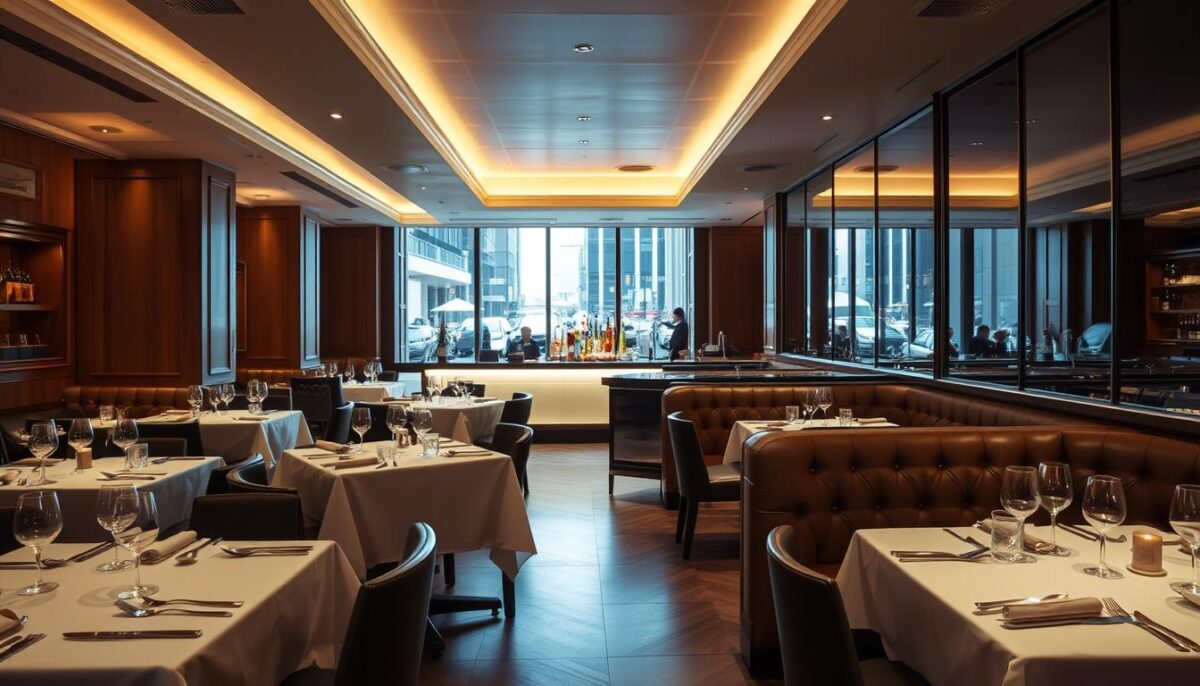
The Power of Ambiance and Atmosphere
The ambiance and atmosphere of a restaurant play a significant role in shaping customer perceptions and influencing their willingness to spend. Ambiance refers to the overall aesthetic and sensory experience, including lighting, decor, and music. A well-designed ambiance can make customers feel comfortable and relaxed, encouraging them to stay longer and order more.
Several psychological principles come into play when creating an inviting atmosphere. For instance, comfortable seating and strategic table spacing can influence customer behavior. Comfortable seating encourages longer stays, while strategic table spacing can affect privacy perceptions and spending behavior.
Creating an Inviting Restaurant Environment
To create an inviting environment, restaurant owners should consider various elements, including temperature, air quality, and noise levels. These factors can subconsciously impact customer comfort and willingness to order additional items. Moreover, the strategic placement of visual cues, such as dessert displays or wine racks, can plant spending suggestions in customers’ minds.
The appearance and behavior of staff also contribute significantly to the environmental psychology. Training staff to be attentive, friendly, and knowledgeable can enhance the overall dining experience. By creating a welcoming atmosphere, restaurants can increase customer satisfaction, encourage repeat business, and ultimately drive revenue.
Menu Engineering: The Silent Salesperson
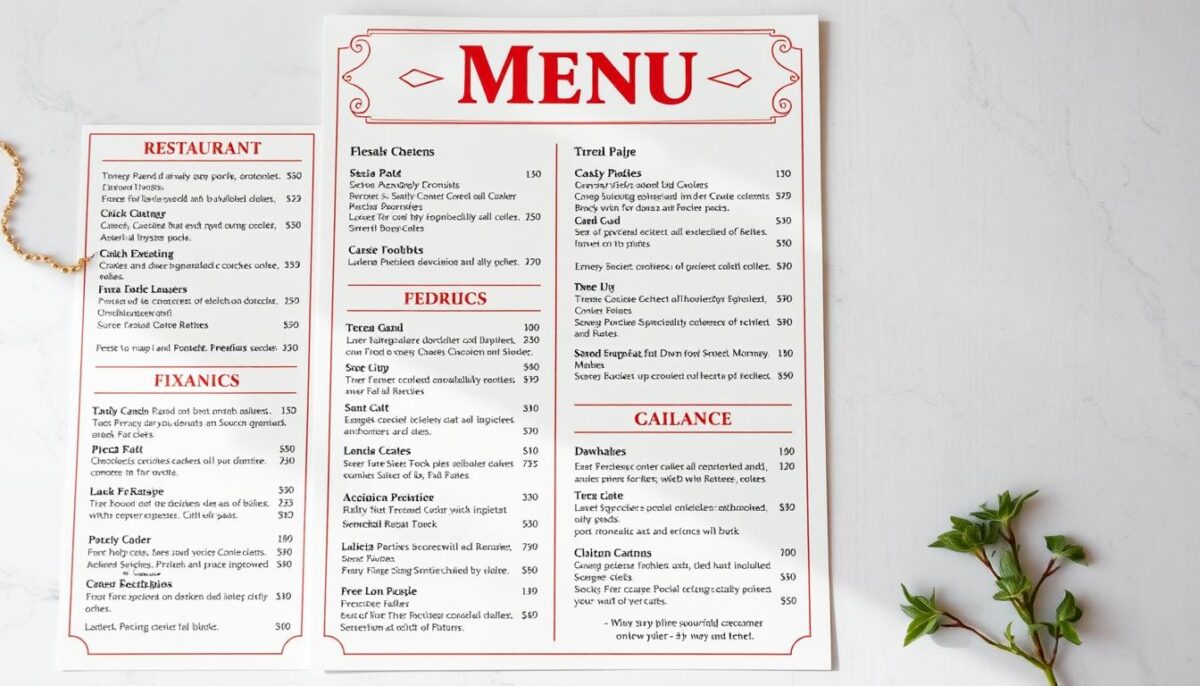
The art of menu engineering lies in subtly influencing customer choices, making it a silent salesperson for restaurants. By strategically designing the menu layout and crafting compelling descriptions, restaurants can significantly enhance customer spending.
Strategic Menu Layout and Design
A well-designed menu is more than just a list of dishes; it’s a powerful tool that can guide customers towards more profitable items. The layout should be intuitive, making it easy for customers to find what they’re looking for while subtly highlighting signature or high-margin dishes.
Key considerations include: using clear headings and sections, highlighting special dishes, and strategically placing high-profit items in prominent positions on the menu.
The Art of Menu Descriptions
Descriptive language plays a crucial role in tantalizing the senses, nudging customers towards more profitable dishes. Adjectives that evoke taste, smell, and texture can create mental simulations that increase desire.
- Using sensory language to describe dishes can increase sales by up to 27%.
- Nostalgic terms, geographic references, and preparation method descriptors can trigger positive emotional responses.
- Storytelling in menu descriptions creates emotional connections and perceived value.
By incorporating these strategies, restaurants can transform their menus into compelling sales tools that not only attract customers but also encourage them to spend more.
Pricing Psychology: Beyond the Dollar Sign
Beyond the dollar sign lies a complex world of pricing psychology that can boost restaurant sales. The way you price your menu items can significantly influence customer spending habits. Pricing strategy is a subtle yet powerful tool in influencing customer behavior.
Price Anchoring and Decoy Effects
Price anchoring is a technique where a higher price point is used as a reference to make other prices appear more reasonable. For example, placing a high-end dish on the menu can make other items seem more affordable by comparison. A customer is more likely to spend money on an item that appears to be a bargain.
Here’s an example of how price anchoring can work:
| Menu Item | Price | Anchored Price |
|---|---|---|
| Premium Steak | $40 | $50 (Anchor) |
| Regular Steak | $30 | Appears cheaper compared to $50 |
The Magic of Numbers in Menu Pricing
The concept of ‘charm pricing,’ where items are priced just below a round number (like $9.99 instead of $10), often leads customers to perceive the prices as significantly lower. Omitting the currency sign has been shown to reduce the customer’s pain of paying, as it makes the price seem less like a monetary transaction.
For instance, pricing a dish at $19.99 rather than $20 can make it more appealing due to the perceived value. The strategic use of numbers in menu pricing can thus influence customer behavior and increase sales.
The Paradox of Choice: Crafting the Perfect Menu Size
The paradox of choice in restaurant menus presents a challenge: too many options can lead to decision paralysis. Crafting a menu that balances variety with simplicity is crucial for enhancing the dining experience and driving sales.
Why Too Many Options Decrease Sales
When faced with too many choices, customers can experience “choice overload,” leading to decreased satisfaction and lower sales. Research has shown that an overabundance of options on a menu can cause diners to feel overwhelmed, ultimately resulting in a slower decision-making process or even abandonment of the purchase altogether.
To mitigate this, restaurants can categorize their menu into clear sections, creating psychological “buckets” that simplify the decision-making process. For instance, a menu might be divided into sections like appetizers, entrees, and desserts, with each category containing a manageable number of options.
Finding the Sweet Spot for Menu Variety
Studies suggest that the optimal number of items per menu category is between 5 and 7. This range provides enough variety to satisfy different customer preferences without overwhelming them. By offering a balanced mix of familiar comfort items and novel options, restaurants can cater to different psychological needs among diners.
A well-structured menu not only enhances customer satisfaction but also improves kitchen efficiency. By limiting the number of options and focusing on signature items, restaurants can streamline their operations and improve profitability.
| Menu Category | Optimal Number of Items | Benefits |
|---|---|---|
| Appetizers | 5-7 | Increased sales, simplified decision-making |
| Entrees | 5-7 | Enhanced customer satisfaction, improved kitchen efficiency |
| Desserts | 3-5 | Increased average order value, improved customer experience |
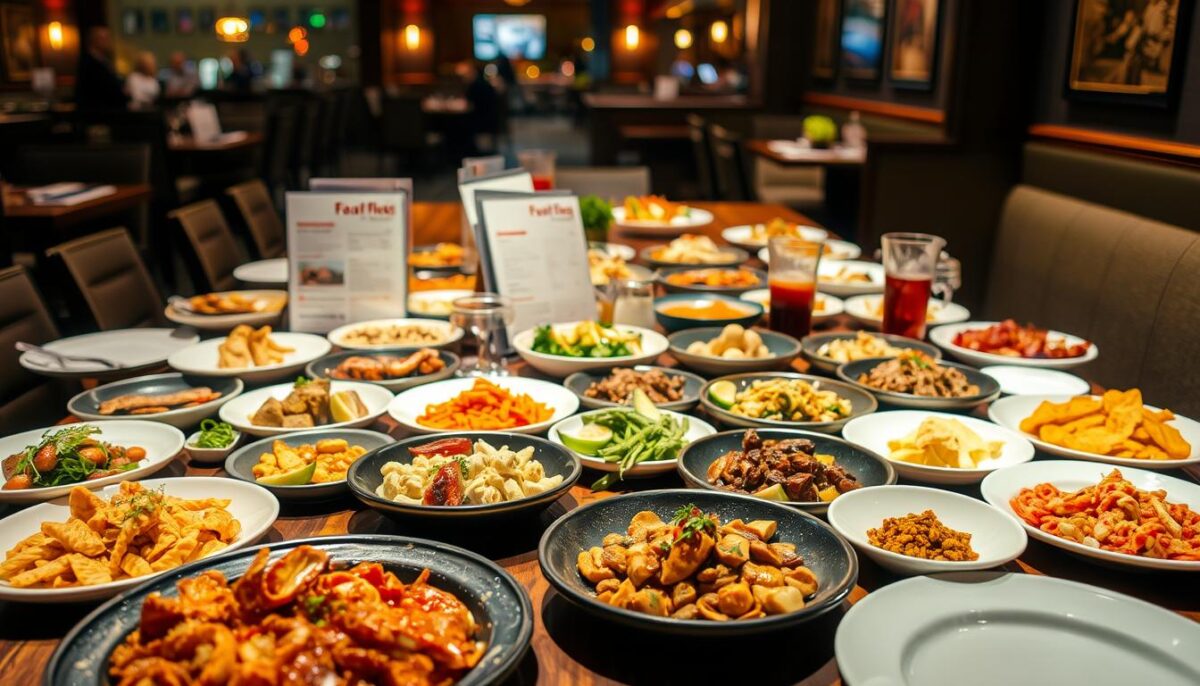
Sensory Marketing: Engaging All Five Senses
Engaging the senses is crucial for restaurants aiming to create an immersive dining experience that encourages customers to spend more. By effectively utilizing sensory marketing, restaurants can influence customer behavior and increase sales.
Visual and Auditory Cues That Increase Spending
Visual elements such as décor, lighting, and presentation of dishes play a significant role in shaping the dining experience. For instance, a well-designed menu with high-quality images can enhance the appeal of certain dishes. Auditory cues like background music or the sounds of sizzling food can also impact customer spending. Research has shown that slow music can lead to customers lingering longer, potentially increasing their spend.
“The ambiance of a restaurant is just as important as the food,” says a renowned restaurateur, highlighting the significance of creating an inviting atmosphere.
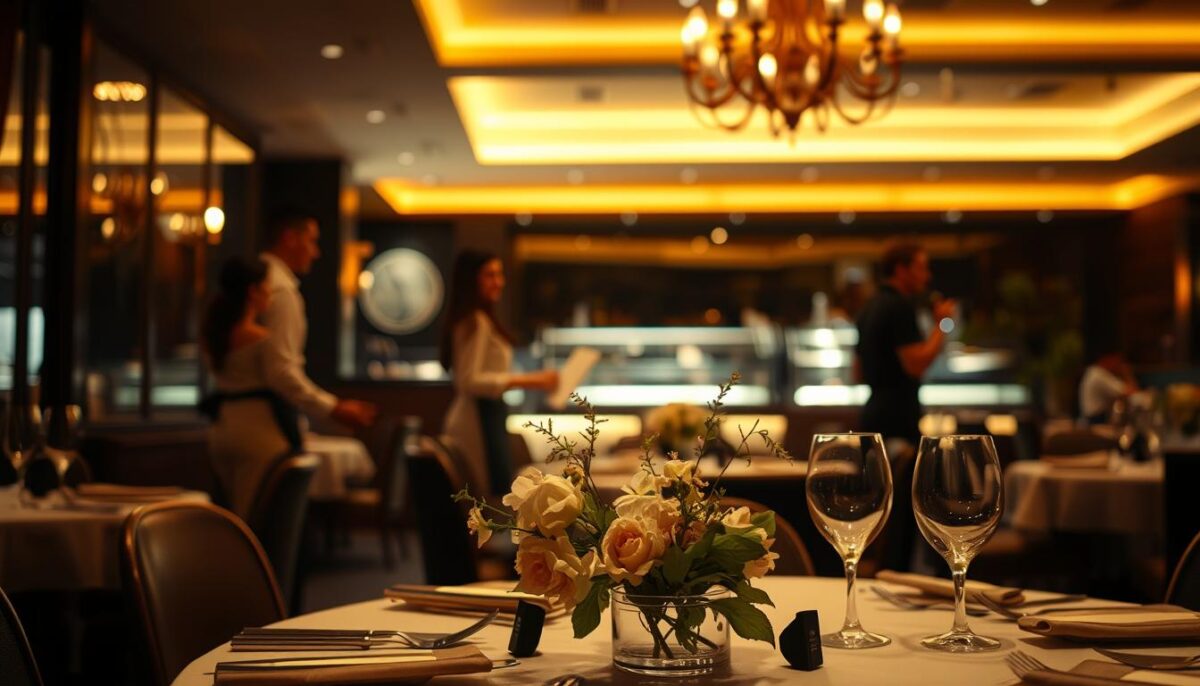
The Role of Aroma and Tactile Elements
The aroma of freshly baked bread or brewing coffee can trigger hunger responses and prime customers to spend more. Tactile elements such as the texture of linens, the weight of cutlery, and the feel of menus also contribute to the overall sensory experience. For example, heavier cutlery and plates can increase the perceived value of dishes by up to 15%. Temperature contrasts, like warm bread with chilled butter, create memorable sensory experiences that enhance overall satisfaction.
- Strategic use of aromas can increase specific menu item sales by up to 300%.
- Tactile elements create subconscious quality perceptions that justify higher prices.
- Textural contrasts in food create more engaging eating experiences that customers are willing to pay premium prices for.
Building Emotional Connections With Diners
The key to a successful dining experience lies in forming emotional connections with customers, making them feel valued and appreciated. When customers feel emotionally connected to a restaurant, they are more likely to become loyal patrons.
Storytelling and Brand Narrative
One effective way to build emotional connections is through storytelling and brand narrative. Restaurants can share their history, highlight their commitment to sustainability, or showcase their culinary expertise. For example, a restaurant might share the story of its family-owned business, creating a personal connection with customers. By doing so, restaurants can create an emotional bond with their customers, making them more invested in the restaurant’s success.
- Share the restaurant’s history and mission to create a personal connection.
- Highlight commitment to sustainability and community involvement.
- Showcase culinary expertise and the story behind signature dishes.
Personalization Strategies That Drive Loyalty
Personalization is another crucial aspect of building emotional connections. Personalized service, acknowledging regular customers, and responding to feedback can foster a sense of belonging and loyalty. Restaurants can also use data to offer personalized recommendations, making customers feel valued. For instance, a restaurant might remember a customer’s preference for a particular dish or wine, making them feel appreciated.
- Implement personalized service to make customers feel recognized.
- Use customer data to offer tailored recommendations.
- Acknowledge and reward loyal customers to foster loyalty.
By combining storytelling, brand narrative, and personalization strategies, restaurants can create a powerful emotional connection with their customers, driving loyalty and increasing customer spending.
Restaurant Customer Psychology: Social Influence and Proof
Social influence plays a pivotal role in shaping customer decisions in the restaurant industry. Today, the dining experience is not just about the food; it’s also about the social proof and influence that drives customer loyalty and sales.
Leveraging Reviews and Testimonials
Customer reviews and testimonials are powerful tools that can significantly impact a restaurant’s reputation and sales. For example, a study found that restaurants with positive reviews on platforms like Yelp tend to have higher customer retention rates. To leverage this, restaurants can showcase customer testimonials on their websites and social media channels. By highlighting positive experiences, restaurants can build trust with potential customers and increase the likelihood of them making a reservation.
Moreover, responding to customer reviews, both positive and negative, demonstrates a commitment to customer satisfaction and can further enhance a restaurant’s reputation. It’s essential for restaurants to actively manage their online presence and encourage satisfied customers to share their experiences.
Creating FOMO (Fear of Missing Out)
Creating a sense of urgency or scarcity can be an effective strategy to drive sales and increase customer engagement. Restaurants can achieve this by introducing limited-time offers, daily specials, or “while supplies last” promotions. For instance, offering a special menu item that is only available for a limited period can create a Fear of Missing Out (FOMO) among customers, encouraging them to visit the restaurant sooner rather than later.
| FOMO Strategy | Description | Impact |
|---|---|---|
| Limited-time Offers | Special menu items available for a limited time | Increases urgency and drives sales |
| Daily Specials | Unique dishes offered daily | Encourages repeat visits |
| While Supplies Last | Promotions that create scarcity | Triggers FOMO and boosts sales |
By leveraging social influence and creating a sense of urgency, restaurants can effectively drive customer engagement and increase sales. Implementing these strategies can help restaurants stay competitive in a crowded market.
Technology as a Psychological Tool
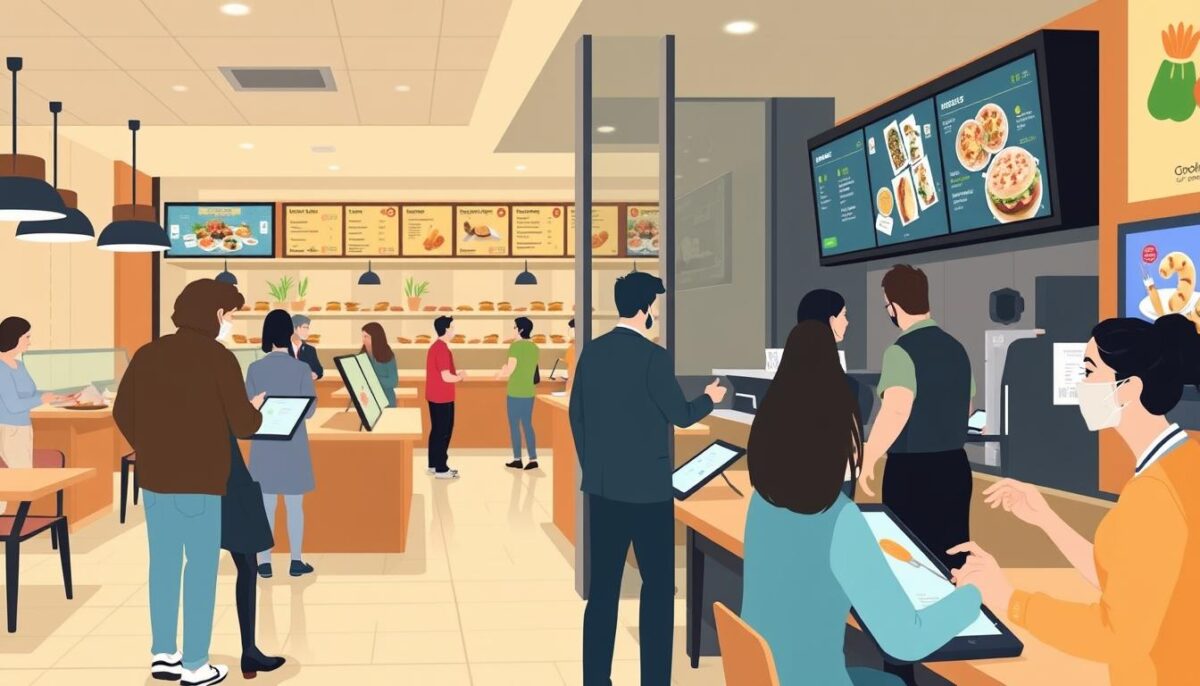
By embracing technology, restaurants can now tap into the psychological aspects of customer behavior. The strategic use of technology can significantly enhance the dining experience, making it more personalized and engaging.
Digital Menus and Ordering Systems
Digital menus and ordering systems are revolutionizing the way customers interact with restaurants. These systems not only streamline the ordering process but also provide an opportunity for restaurants to upsell and cross-sell relevant items. By analyzing customer preferences and ordering history, digital menus can suggest complementary dishes, enhancing the overall dining experience.
Key benefits include: reduced wait times, increased order accuracy, and the ability to offer personalized recommendations. This not only improves customer satisfaction but also increases the average order value.
Data-Driven Personalization
Data-driven personalization is a powerful tool that allows restaurants to understand individual customer preferences and tailor their offerings accordingly. By leveraging customer data, restaurants can create targeted promotions and offers that resonate with their customers. For instance, a customer who frequently orders a particular dish can receive a targeted promotion for that dish or be invited to a special event featuring a new variation of it.
Such personalized interactions not only enhance the customer experience but also encourage loyalty and repeat visits. By using CRM software to centralize customer interactions and data, restaurants can craft tailored communications and offers, making each customer feel recognized and valued.
To maximize the impact of data-driven personalization, restaurants can segment their customer base and create psychologically targeted marketing campaigns. By understanding customer visit patterns and preferences, restaurants can time their offers to maximize redemption rates. This approach not only increases customer spending but also builds loyalty through recognition.
Ethical Applications of Psychological Triggers
To maximize the effectiveness of psychological triggers in restaurants, it’s essential to prioritize ethical considerations and customer value. The key is to create a win-win scenario where both the business and the customer benefit.
Balancing Profit and Customer Value
Leveraging customer psychology can increase their lifetime value to your restaurant and provide a better guest experience. By understanding how to use psychological triggers effectively, you can create genuine value for customers while increasing restaurant profits. This involves using strategies that help customers discover items they truly enjoy but might not have tried otherwise, enhancing satisfaction, and reducing post-purchase regret.
- Using psychology to create more positive dining experiences
- Helping customers make better decisions by leveraging collective wisdom
- Creating moments of delight by meeting unstated customer needs
Creating Win-Win Scenarios
By applying psychological insights, restaurants can improve operational efficiency while enhancing the customer experience. I offer a framework for restaurant owners to evaluate each psychological strategy based on its benefit to both the business and the customer. This approach ensures that the use of psychological triggers is both ethical and effective.
Conclusion: Implementing Psychology-Based Strategies for Long-Term Success
As we explored the psychological triggers that influence customer spending in restaurants, it’s clear that understanding customer psychology is crucial for long-term success. By focusing on these psychological aspects, restaurants can create memorable experiences that not only satisfy the palate but also resonate emotionally, ensuring customers keep coming back for more.
The key psychological triggers covered throughout this article work together to create a comprehensive approach to increasing customer spending. These include menu engineering, pricing psychology, sensory marketing, and building emotional connections with diners. By leveraging these strategies, restaurants can drive sales and loyalty.
To implement these strategies effectively, restaurant owners should prioritize psychological triggers based on their specific business model, customer base, and current challenges. A practical implementation roadmap should include quick wins, such as optimizing menu layouts, and longer-term strategic changes, like integrating technology to enhance the dining experience.
Measuring the effectiveness of these strategies is crucial, using key performance indicators beyond revenue, such as customer satisfaction and loyalty metrics. By continuously refining and testing psychological strategies, restaurants can create genuine value for customers while increasing profitability, leading to sustainable long-term success.
In conclusion, by understanding and applying psychological triggers, restaurants can create a competitive advantage in the market. By doing so, they can drive business growth, enhance customer loyalty, and ultimately achieve long-term success.
FAQ
How can menu engineering influence my dining experience?
Menu engineering can significantly impact my dining experience by using strategic layout and design to draw my attention to specific dishes, making me more likely to order items that are profitable for the establishment.
What role does ambiance play in my decision to dine at a particular restaurant?
Ambiance plays a crucial role in my decision to dine at a particular restaurant, as an inviting atmosphere can make me feel more comfortable and inclined to stay longer, ultimately leading to increased spending.
How do restaurants use pricing psychology to their advantage?
Restaurants use pricing psychology techniques such as price anchoring and decoy effects to make certain menu items appear more reasonably priced, influencing my perception of value and encouraging me to spend more.
Can too many menu options actually decrease sales?
Yes, having too many menu options can lead to decision paralysis, causing me to feel overwhelmed and ultimately decreasing sales, as I may choose to leave without making a decision.
How do sensory marketing techniques impact my dining experience?
Sensory marketing techniques, such as visual and auditory cues, aroma, and tactile elements, can engage my senses and create a more immersive experience, making me more likely to enjoy my meal and return to the restaurant.
What is the significance of storytelling in a restaurant’s brand narrative?
Storytelling in a restaurant’s brand narrative can create an emotional connection with me, making me feel more invested in the brand and more likely to become a loyal customer.
How can technology be used as a psychological tool in restaurants?
Technology, such as digital menus and ordering systems, can be used to create a more streamlined and personalized experience, making me feel more comfortable and increasing the likelihood of me returning to the restaurant.
What is the importance of balancing profit and customer value in the application of psychological triggers?
Balancing profit and customer value is essential to ensure that the use of psychological triggers does not come across as manipulative or exploitative, ultimately maintaining a positive and loyal customer base.
